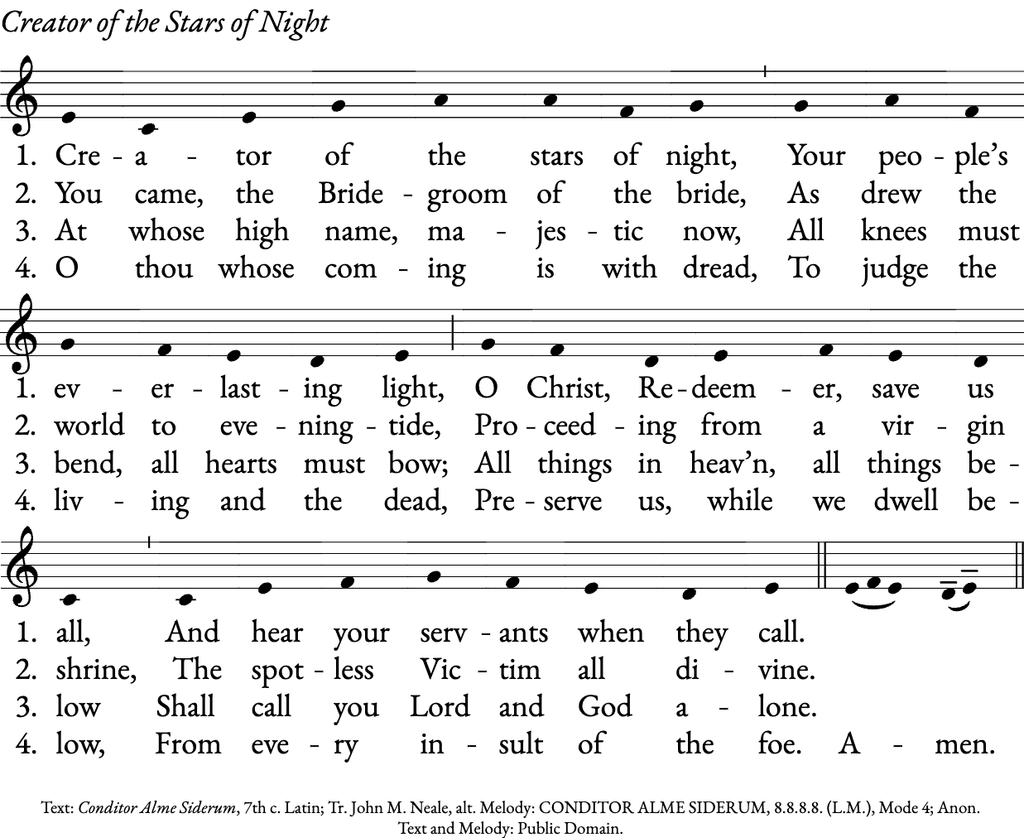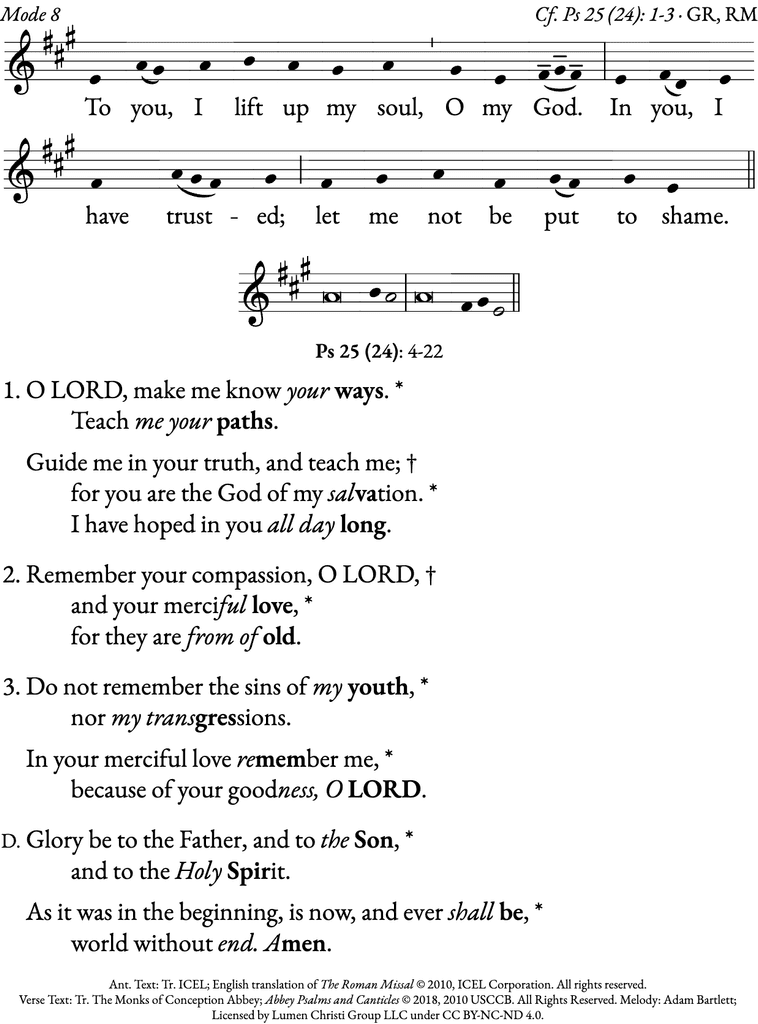Adam Bartlett
Mar 14, 2024
This is the third part in a 5-part series on the music of Holy Week. Click here to view Part 1 (Palm Sunday), and Part 2 (Holy Thursday).
—————
The Celebration of the Lord’s Passion on Good Friday is unlike any other liturgy throughout the entire liturgical year. Not a Mass in and of itself, it is a continuation of what began the night before on Holy Thursday and a preface to what will begin the next evening at the Easter Vigil.
It is a profound time of silence and desolation. The altar is stripped and the tabernacle is empty. The ministers process into the church not to an Entrance Chant, but in silence. On this day, as we enter into the mystery of Christ’s Passion, music has a significant role to play as it pierces through the silence.
Here are some helpful tips, along with some scores and audio recordings from Source & Summit, to help you prepare for a beautiful and solemn Good Friday at your parish:
Good Friday Preparation Guide
Just as the Mass of the Lord’s Supper did not end with a dismissal but instead faded into the night, the Celebration of the Lord’s Passion does not begin with the sign of the Cross or any introductory rites. The priest’s prayer is the first sound to emerge from the silence—a prayer meant to be solemnly chanted as a part of the extended musical prayer that will follow.
The Liturgy of the Word then begins, which reaches its pinnacle with the Passion reading from the Gospel of John. In its most solemn form, the Passion is chanted in three parts.
After a brief homily, the Solemn Intercessions are sung. While they may also be spoken, the melodies given in the Roman Missal are so simple that most deacons should be able to handle the task. If no deacon is present, the singing can be assigned to a cantor. Following the invitation Let us kneel—let us stand, the intentions are sung in the style of the simple preface tone that is easily learned and applied. The prayers of the priest are sung after each intention, which are sung in the solemn tone if “let us kneel” is used.
The Adoration of the Holy Cross
Following the Liturgy of the Word and Solemn Intercessions, the most musically prominent portion of this liturgy begins: the Adoration of the Holy Cross. Many parish musicians might be surprised to know that the Church provides an entire order of music to be sung during this time. These chants allow for enough flexibility to shorten or extend the singing as needed for the length of the procession, and for the addition of other music.
The rite begins with the Showing of the Holy Cross, which can take one of two forms that are described in detail in the Roman Missal. There are also two melodies for the chant Behold the wood of the Cross, both of which conclude with the same melody for the response of the people. While the simpler melody is more commonly used, more musically gifted deacons should not be afraid to use the more ornate melody.
Similar to the Easter Alleluia, the pitch of this chant should raise in pitch each time that it is sung by the deacon, ideally by step. While the rubrics of the Roman Missal to not explicitly call for this melodic modulation, the Graduale Romanum and Graduale Simplex both do.
The first chant given in the Roman Missal and Graduale Romanum for the Adoration of the Holy Cross is We adore your Cross, O Lord with a verse from Psalm 67 (66). This chant is significant in the way that it immediately places the Cross in the context of the Resurrection: because of the Cross, joy has come to the whole world. Note also that the Gregorian chant melody for this text (Crucem tuam) was also the basis for the composition of the Mortem tuam melody that follows the consecration in every Mass in the postconciliar missal.
Click below to view and listen to the introductory chants for the Adoration of the Holy Cross in an Ordo created on the Source & Summit Digital Platform:

Good Friday: The Showing and Adoration of the Cross
The Reproaches
Then follows an ancient chant that is not commonly heard in our parishes today, but that remains in our Roman Missal, waiting to be rediscovered and restored. The chant is so ancient, in fact, that its roots are in the Greek liturgy. Along with the Kyrie eleison, the invocations “Hagios o Theos”, “Hagios Ischyros”, and “Hagios Athanatos, eleison himas” are the only other place in the liturgy of the Roman Rite that retains the use of the Greek language. These words, known as the Trisagion, are also still used prominently in the Byzantine liturgy. Catholics in our time will also recognize them as the conclusion of the Chaplet of Divine Mercy.
The Reproaches are a song of lament, sung in the voice of God to his people, with his people replying “Holy is God, Holy and Mighty, Holy and Immortal One, have mercy on us”. Each stanza of this chant recalls a provident action of God in the Old Testament, placed in contrast with an action of his people that led to his crucifixion. Of course, in the context of the sacred liturgy, these accusations are not made solely toward the Jewish people, but toward all of us—through our sin and disobedience we have all denied Christ and are in need of his mercy.
It is important to note that the Reproaches are sung by the choir alone, and in a particular form that alternates between two choirs, and with verses that are sung by two cantors together. For dramatic effect, the two choirs also might be separated spatially in the church, apart from the cantors.
Click here to listen to The Reproaches in an English chant setting as found in the Source & Summit Gradual:

Good Friday: The Reproaches
Other Chants and Musical Options
Following the Reproaches, the Roman Missal prescribes the hymn Faithful Cross (Crux fidelis) to be sung. This hymn has 10 verses that are sung between repetitions of either the first or second part of the first verse which are sung as a refrain throughout. As a result, the hymn can be quite long and cover an extended period of time. It is possible to omit some of the verses, of course, but the Roman Missal states that the last verse (Wisdom, power, and adoration) is “never to be omitted” and should be sung by all, and so it should be sung as the final verse if time or circumstance require it to be shortened.
Like the Reproaches, the Missal suggests that two cantors sing each verse of this hymn, with the choir and all repeating the refrain. If choirs are already stationed in different places in the church for the Reproaches, they might remain there for this hymn also to add dimension to the singing during the Adoration of the Cross.
The Missal also suggests that the Stabat Mater—or, in English, At the Cross Her Station Keeping—be sung following Faithful Cross if needed. Choirs are also likely to draw upon some of the rich choral and polyphonic pieces that are appropriate for Good Friday. And, depending on the size of your congregation and the pace of the procession, they very well may be needed!
Pro Tips for Good Friday:
Consider singing the Responsorial Psalm and Gospel Verse a cappella, or even to sing all of the music for Good Friday entirely unaccompanied. This follows a venerable tradition and adds particular solemnity to the character of this liturgy.
The Passion Reading may be read continuously, or broken into parts. The Source & Summit Missal provides parts for Christ, a Narrator, a Voice, and the Crowd. The Source & Summit Digital Platform also offers an arrangement for three parts that combines Voice and Crowd. Either of the three configurations can be applied and exported as a PDF for ease of use.
Music leaders might consider scheduling a Holy Week practice session with the deacon. A little preparation for the Solemn Intercessions and Showing of the Holy Cross can go a long way!
Don’t be afraid to sing the Solemn Intercessions! The melodies are simple and within reach of any deacon and priest. Musicians who are encouraging their clergy to chant might offer the hint to them that the reciting tones of the simple and solemn tone are different, however. The intercessions themselves use the reciting tone “Do” (or C on the treble staff), and the solemn tone for the orations uses the reciting tone “La” (or A on the treble staff). As a helpful reminder, the note that the intercessions end on is the reciting tone for the orations in the solemn tone.
Simplify Your Holy Week Preparations
Sign up for a free 30-day trial on Source & Summit to assist your preparations for Holy Week today and gain instant access to music scores, recordings, readings and rubrics that you can use to plan, share, print, and practice.
—————
Note: This article has been updated to clarify that the chant Behold the wood of the Cross should raise in pitch, according to the rubrics of the Church's chant books. It previously stated that the pitches should not raise in pitch due to the lack of specificity found in the rubrics of the Roman Missal.


